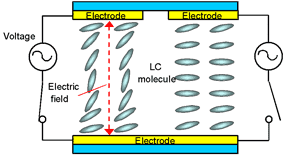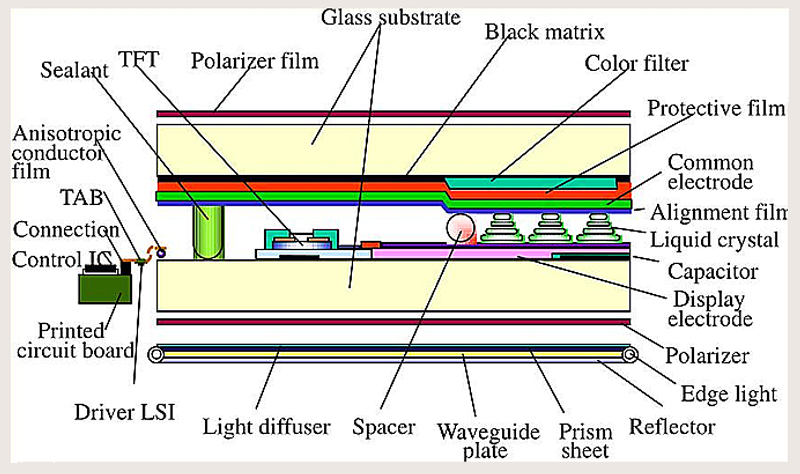Introduction
Have you ever wondered about the technology behind the crystal-clear images on your smartphone, laptop, or TV screen? Liquid Crystal Displays, or LCDs, play a significant role in our daily lives. Found in countless devices, these displays transform raw data into visual information. In this article, we’ll dive into the principles of LCD technology and uncover how they bring images to life.
What are Liquid Crystals?
At the heart of every LCD module lies liquid crystal material. This unique substance has properties that place it between a liquid and a solid. Picture molecules that flow like a liquid yet maintain an ordered arrangement, similar to crystals. This dual nature enables them to respond to electric fields, which is a cornerstone of LCD functionality.

The Structure of an LCD Module
An LCD module consists of multiple layers working seamlessly together. Let’s explore its key components:
- Rétroéclairage
Since liquid crystals cannot emit light, a backlight is essential. Most LCDs today use LED backlights for optimal performance. - Les Filtres Polariseurs
These filters serve as gateways for light, permitting only specific light waves to pass. Typically, two filters are aligned perpendicularly. - Glass Substrates
Two sheets of glass encase the other layers, providing both stability and support. - Transparent Electrodes
Indium Tin Oxide (ITO), a thin conductive material, is applied to the glass. These electrodes generate electric fields when voltage is applied. - Liquid Crystal Layer
This layer houses the liquid crystal material, positioned between the glass substrates and electrodes. - Les Filtres de Couleur
For color displays, red, green, and blue filters create vibrant visuals. Each pixel comprises these three sub-pixels.

How LCDs Work: A Step-by-Step Process
- Image Creation
By adjusting the voltage of individual pixels, LCDs control brightness and color, resulting in a full spectrum of vivid images. - Backlight Activation
The backlight emits light, which passes through the first polarizing filter. This filter aligns the light waves. - Liquid Crystal Adjustment
Without an electric field, the liquid crystals rotate polarized light, enabling it to pass through the second polarizer. - Voltage Application
When voltage is applied, liquid crystals realign, blocking light from passing through the second polarizer.

Types of LCD Technology
LCD technology has evolved, giving rise to several types:
- TN (Twisted Nematic): Budget-friendly and fast, ideal for entry-level applications.
- IPS (In-Plane Switching): Offers wider viewing angles and superior color accuracy.
- VA (Vertical Alignment): Delivers deep blacks and high contrast, often used in TVs.
- OLED (Organic Light-Emitting Diode): Not an LCD but noteworthy for its vibrant colors and self-emitting pixels.
Why LCD Modules are Important
LCDs are not merely display components; they are the interface between us and the digital world. They’ve become essential in a wide variety of products:
- Consumer Electronics: Smartphones, tablets, laptops, and TVs all rely on LCD technology.
- Industrial Equipment: Control panels, medical devices, and measurement instruments utilize LCD modules.
- Automotive: Car navigation systems and dashboard displays increasingly feature LCDs.
- Home Appliances: Smart refrigerators, washing machines, and other appliances also use LCD technology.
Conclusion
LCDs have revolutionized the way we interact with technology by transforming digital signals into visual images. They achieve this using a combination of polarizers, liquid crystals, and electrodes, working in harmony to give life to displays. From a simple watch to the most advanced medical devices, LCD technology has become an indispensable part of modern lifestyle.

